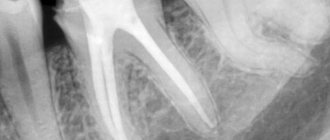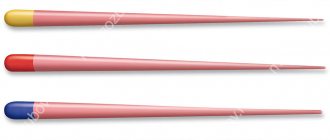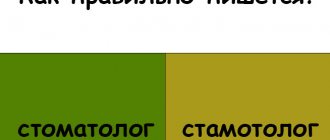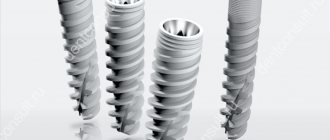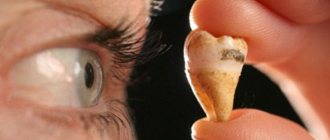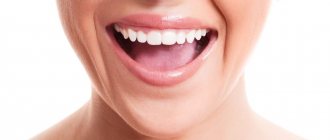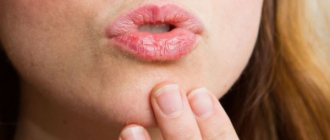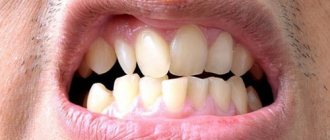Trees of the genus Palaquium and latex from their sap.
| This article requires additional links for verification . |
Palaquium gutta
Gutta-percha
is a tree of the genus
Palaquium
in the family Sapotaceae.
The name also refers to the rigid, naturally biologically inert, elastic, electrically non-conductive, thermoplastic latex obtained from tree sap, specifically Palaquium gutta
; it is a polymer of isoprene that forms a rubber-like elastomer.
The word gutta percha
comes from the plant's name in Malay:
getah
translates to "latex".
Percha
or
percha
is the old name for Sumatra.
From a scientific point of view
What is the meaning of the word "gutta-percha"? From a scientific point of view, this material was classified in 1843 and classified as a useful natural thermoplastic. In the second half of the 19th century, gutta percha was used for a variety of domestic and industrial purposes.
In particular, this material was needed as an insulating substance for submarine telegraph cables. Long before gutta percha was introduced into the Western world, it was used in a less processed form by the natives of the Malaysian archipelago to make knife handles, walking canes and other purposes.
The first European to discover this material was John Tradescant, who discovered it in the Far East in 1656. He called it "Mather's forest." Dr. William Montgomery, a medical officer in the Indian Service, introduced gutta-percha into practical use in the West. He was the first to recognize the potential of this material in medicine, and in 1843 he was awarded the gold medal of the Royal Society of Arts in London.
No allergic reactions
As scientists managed to find out, the material is quite inert and non-toxic. This means that it is not capable of entering into any reactions with the human body. Gutta-percha is a guarantee that even in sensitive patients the risk of tissue irritation and negative reactions is minimal. All materials used in dentistry for the purpose of preserving natural teeth must meet the same selection criteria as gutta-percha. One of its few disadvantages is the lack of adhesion to the walls of the tooth. But this disadvantage is compensated by special cement compositions, root sealants and pastes, which are used in conjunction with gutta-percha points.
Using natural materials, does not cause allergies
What is a gutta-percha pin made of? In addition to gutta-percha itself, specialists use zinc oxide to create it. It gives strength to the structure, which helps strengthen significantly damaged teeth and use the pin as a reliable support for an artificial crown, if necessary. The content of this substance is about 70% of the entire structure. Antioxidants are also used as excipients.
Gutta-percha tree
In Malaysia, the tree is known as "taban" and people there traditionally used the hardened sap ("hanah") to make items such as molded handles for tools and knives. This natural latex, also called gutta-percha, is a very valuable product.
Palaquium gutta trees grow 5-30 m in height and are usually up to 1.5 m in diameter. The leaves are evergreen, alternate or spirally arranged, simple, entire, about 8-25 cm long each. They are glossy green above and often yellow or bluish below.
The flowers appear in small clusters along the stems, each flower having a white corolla with four to seven (mostly six) sharp lobes. The fruit is an ovoid berry 3-7 cm in diameter, containing from one to four seeds. In many species it is edible.
In Australia, gutta-percha is the common name specifically used for the tree Excoecaria parvifolia, which produces an aromatic, heavy, dark brown wood. It is also called "northern birch". This particular species is not related to the genus Palaquium.
From a chemical point of view
What does gutta-percha mean? In the literal sense, it is made from gutta-percha. What kind of meterial is this from a chemical point of view? Its structure is a latex elastomer or a polymer made of isoprene or polyisoprene. While latex rubbers are amorphous in molecular structure, gutta-percha (transstructure) crystallizes, resulting in a stiffer consistency. Gutta-percha is an isoprene polymer that is soft when heated and can be easily cast into a variety of shapes that are precisely detailed.
Use in dentistry
The same bioinertia that made gutta-percha useful for marine cables also came in handy for medical purposes, namely dentistry. This material is used in many surgical devices and in root therapy (obturation or filling the empty space within the root of a tooth after it has undergone endodontic therapy). Its physical and chemical properties, including inertness and biocompatibility, melting point, ductility and malleability, make it important in endodontics.
The material is elastic and pliable
It is interesting that when translated from English, the first part of the word “gutta” means resin, the second “percha” is translated as island. The expression “gutta-percha” has stuck among the people; it is used to describe those whose character demonstrates flexibility and evasiveness in thinking and actions.
Elastic material seals tooth canals well
What are the benefits of gutta-percha in dentistry? This allows you to easily fill the entire tooth cavity and reliably seal its canals, as well as strengthen the filling. But provided that the dentist does his job efficiently and has no problems determining the length of the canals. In cases where the tooth canals were not completely filled, patients may face unpleasant consequences: the infection can easily penetrate into the pulp chamber, cause complications, and the tooth will have to be unfilled and re-treated.
Historical use
Being biologically inert and stable, this type of latex is a good electrical insulator with a high dielectric constant. Wood of many types is also valuable. The properties of gutta-percha were noticed by the Western world only in 1842, although the local Malay aborigines had been using it for many centuries. Allowing this liquid (juice) to evaporate and coagulate in the sun produces a rigid latex that can be flexible again when heated, but is not brittle, unlike rubber made before the discovery of vulcanization.
By 1845, telegraph wires insulated with gutta-percha were being produced in Great Britain. Latex served as an insulating material for early submarine telegraph cables, including the first transatlantic telegraph cable. Gutta-percha was especially suitable for this as it was not attacked by the marine plants or animals that had damaged previous submarine cables.
The material was the main component of Chatterton joint, used as an insulating sealant for telegraph and other electrical cables. Since 1930, polyethylene has replaced gutta-percha as an electrical insulator.
In the mid-19th century, gutta-percha was also used to make furniture, notably founded in 1847. When heated, the material could be molded into furniture, jewelry, or tableware. Some of these decorative Revival pieces were shown at the Great Exhibition in 1851 in Hyde Park, London.
Gutta-percha
Details Category:
GUTTA PERCHA
, hardened sap of some plants, ch. image of the Sapotaceae family (see Gutta-percha tree). The juice is extracted by tapping 12-15 year old trees. Until recently, gutta-percha was extracted in a predatory manner - by felling trees and collecting sap from cuts in the bark, which led to the merciless extermination of gutta-percha trees; gutta-percha is also obtained from leaves and branches by extracting juice from them with toluene, petroleum ether or carbon disulfide; There is also a method for producing gutta-percha by applying alkali to crushed leaves and branches under a pressure of 5 atm. The best varieties of gutta-percha are yellowish-red or yellow in color, the worst are dark in color. Gutta-percha is tasteless and has an unpleasant odor when heated. Specific gravity 0.960-0.999; Gutta-percha is somewhat heavier than water if the air is removed from it. The cubic expansion coefficient of pure gutta-percha at temperatures from 0 to 40° is 0.000496. In polarized light (especially under pressure), gutta-percha produces beautiful colors. Raw gutta-percha is wrinkled and under a microscope appears to be riddled with many irregularly shaped small voids; When rolling or pressing, a fibrous, low-porous structure is noticed. At 25° gutta-percha is leathery, flexible, low-elastic, at 40° it softens, at 45° it is doughy, at 62-65° it is soft and easily formed, stretches into threads, plates, tubes, at 100° it is sticky, melts at 150° into easily movable a liquid that gradually darkens when cooked.
Dry distillation of gutta-percha produces thickening vapors; The distillate is yellow in color, has an unpleasant odor and is a good solvent for gutta-percha; in addition to water, it contains mainly rubber, isoprene and heveene. Gutta-percha ignites easily and burns with a bright, smoky flame. When rubbed, gutta-percha is charged with negative electricity; fresh gutta-percha is a poor conductor of heat and electricity. Under prolonged exposure to light and air, gutta-percha attaches oxygen and turns into a crumbling white mass; such gutta-percha becomes a good conductor of electricity and becomes positively electrified when rubbed. On the contrary, protected from light in water, especially in sea water, gutta-percha does not lose its qualities. Dilute mineral acids and salt solutions have no effect on gutta-percha; concentrated H2SO4 destroys gutta-percha; HNO3 also quickly destroys gutta-percha, forming red fumes. Gutta-percha completely dissolves in chloroform and carbon disulfide at ordinary temperatures; in benzene, turpentine, kerosene it dissolves when heated, in alcohol or ether - only partially; In boiling water, gutta-percha absorbs water, becomes sticky and stretches into threads.
Pure gutta-percha, obtained by decolorizing a solution of purified gutta-percha in chloroform with animal charcoal and precipitation with alcohol, is a hydrocarbon of the formula (C10H16)n. Raw gutta-percha contains resins, minerals, sugars, proteins, tannins and the following three characteristic components: gutta up to 82%, alban 14-15% and fluaville 4-6%. The content of gutta determines the good properties characteristic of gutta-percha - plasticity at high temperatures, elasticity and stretchability.
For practical use, gutta-percha must satisfy known conditions that depend on the physical properties of purified gutta-percha: the ratio between gutta and other resins affects the softening temperature; electrical properties depend mainly on the quality of gutta, on the amount of pollutants and on water. First of all, physical and mechanical tests are of practical importance - for example, finding the strength coefficient, insulating capacity, inductivity, resistance to penetration by an electric spark, and the degree of ductility. Next comes chemical tests for acid resistance, moisture content, resins and dirt.
The use of gutta-percha compared to rubber is extremely limited. Gutta-percha is used as an insulating substance for submarine cables, for medical and dental purposes, for molding, and for special rubber compounds. Gutta-percha is vulcanized with sulfur in the same way as rubber, but products made from vulcanized gutta-percha do not have any special advantages over unvulcanized ones and are of no practical importance. Gutta-percha is much more expensive than rubber, its price reaches 10 rubles per 1 kg.
In the USSR, on the Black Sea coast of the Caucasus, several specimens of the Central Chinese tree Eucommia ulmoides Oliv., the leaves of which contain a gutta-percha-like substance, have been growing for many years. The interest of this tree for industrial purposes was noted back in 1889 by Dubovsky and later by Vernuccio. Research on the use of Eucommia for the production of gutta-percha is being carried out on the initiative of Rezinotrest by the Abkhaz People's Commissariat of Agriculture (at the Abkhaz experimental station in Sukhum).
Source: Martens. Technical encyclopedia. Volume 6 - 1929
- < Back
- Forward >
Modern use
It was also used to make mourning jewelry because it was dark in color and could easily be molded into beads or other shapes. Pistol grips and shoulder pads were also made of gutta-percha, which gave them strength and durability. The guttie golf ball, which had a hard gutta-percha core, revolutionized the game.
This material remained the main industrial product in the twentieth century, but later began to be gradually replaced by superior synthetic materials. Despite its long history, gutta percha is still used today. Modern dentists continue to use it to fill root canals.
Affordable material cost
Dental treatment using gutta-percha is available to everyone today. The cost of installing material into the tooth canals can vary from 1 to 3 thousand rubles.
Previously, paste was placed in tooth canals as a filling material, but it tended to quickly dissolve, forming voids in which bacteria and pathogenic microflora easily multiplied. Methods of using gutta-percha in dentistry have brought the quality of service provision to a fundamentally new level. Thanks to this, long-term preservation of natural teeth has become possible.
Notice
: Undefined variable: post_id in
/home/c/ch75405/public_html/wp-content/themes/UltraSmile/single-item.php
on line
45 Notice
: Undefined variable: full in
/home/c/ch75405/public_html/wp-content /themes/UltraSmile/single-item.php
on line
46
Rate this article:
( 4 ratings, average: 5.00 out of 5)
pulpitis
"Gutta-percha": meaning
What is this concept? So, in the literal sense, gutta-percha is made from gutta-percha (natural rubber). In a figurative sense, this word has acquired a meaning associated with flexibility and elasticity. In relation to people, this definition began to be used and became a household name after D. V. Grigorovich wrote his sad story “The Gutta-percha Boy”.
This is a tragic story about a circus boy who was said to have no bones, he was so flexible and dexterous. From now on, people who are called gutta-percha are athletes with good stretching. It is achieved through long training. The gutta-percha woman is a gymnast who can do incredible things with her body.
Mentions in literature
- Dmitry Grigorovich's story “The Gutta-percha Boy” tells about a boy who performs in the circus thanks to his extraordinary flexibility.
- In Nikolai Leskov’s story “Lefty”, the so-called “gutta-percha pill” is mentioned as one of the means of treating “half-skipper” (distorted “under-skipper”) - an Englishman who became very ill from drinking a large amount of alcohol (a bet was made with Lefty: who is more drinks alcohol) on a ship sailing from England to Russia.
- In Vsevolod Garshin’s book “From the memoirs of Private Ivanov”: “They lived together; the captain took kindly to the ensign, gave him water and food, and during the rains even covered him with his only gutta-percha cloak.”
- The book by Alexander Olbik is called “Gutta-percha love”
- In Vladimir Vysotsky’s song “Cliffhanger”
Gutta-percha gait
What does gutta-percha mean? This word is now quite fashionable and in youth slang means flexible, beautiful, graceful. If we recall the words from the song of the singer Bianca - “With a gutta-percha gait we walk into Iarfor (nightclub) ... “.
Here we mean not so much elastic and flexible, but soft, swaying and graceful. You can sometimes hear about a person that he or she is such a gutta-percha. It can mean flexible and sexy. Although in the past the term was associated with rubber and gymnasts, it is now also synonymous with sexuality.
